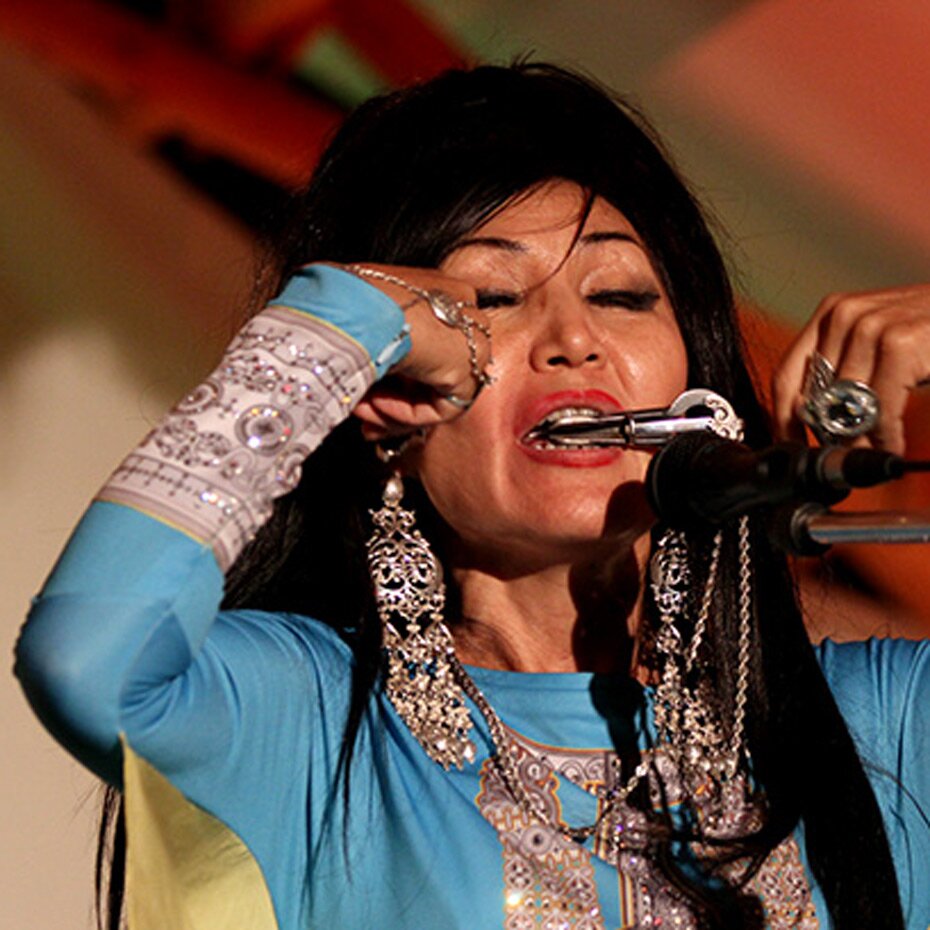The mechanics of the Jew's harp is very simple: In a frame made of metal or bamboo a movable reed is mounted which, as a rule, is set in motion by a person's hand. The air turbulence which occurs between the frame and the moving tongue generates a humming sound. This humming can be strenthened by resonators. The most treasured and most varied resonator is the human body - if one holds the Jew's harp to the mouth, the quiet whirring gets louder and it can be varied with the help of the mouth cavity. How can this mechanism be extended? What alternatives and extensions are imaginable? What does such an extension sound like? At this point a number of well-known experiments are brought together.
The Swiss sound artist and Jew's harp expert Anton Bruhin says, "the Jew's harp is just a hum supplier. That could also be a shaving device or an electric toothbrush. There is a sago palm tree in Papua New Guinea. The sago beetle lives in this palm tree. There they take a leaf from the palm tree and skewer the beetle to the rib of a leaf. The beetle hums and wants to escape but is caught fast. The humming beetle is held in front of the mouth. That is just to say that the generator can actually be replaced" As animal rights protectors, we have reservations about this musical instrument and hope it will be very rarely or never built at all. The basic idea of a 'hum supplier' is all that is interesting. Music made using the sago beetle referred to by Bruhin was published on the CD "Music and the Dispel of Thoughts" by the Dutch Jew's harp expert Phons Bakx.
Beginning with this idea Anton Bruhin has been experimenting on a variety of new constructions for many years. In 1994 he gave an engineer the job of building an electromagnetic Jew's harp. A magnetic coil is placed on the spring of the Jew's harp and this sends impulses which cause the tongue to vibrate. This enables new sound effects to be achieved, e.g. the tone can be played continuously. As a result of this, when playing the Jew's harp, one hand is free and with his free hand, Bruhin holds other resonators in front of the oral cavitiy, e.g. pans with holes or tuned pipes.
The way the electromagnetic Jew's harp sounds can be heard for instance in the song entitled "Mr. Terrine" on Bruhin's album "Travels with a Trump". Virtuosi such as Leo Tadagawa from Tokyo and Albina Degtyareva from Yakutia have come together on the album. For any listener the solidarity of traditional jew's harp music, folk music and avant-garde sound experiments is still today a very exciting voyage through the sound cosmos of the Jew's harp. The film "Trümpi" by the Swiss film producer Iwan Schumacher, who accompanied Anton Bruhin on a trip to the Yakutian Jew's harp players, gives a detailed impression of how multi-faceted Anton Bruhin's understanding and interpretation of the character of the Jew's harp is. "Travels with a Trump" is the soundtrack of the film "Trümpi" about Anton Bruhin and the Jew's harp dating back to the year 2000.
In the case of the mouth bow, the mechanism used to create the sound is very similar. A steel or rattan string is extended on a piece of wood and struck with a stick. The musician's mouth cavity acts as a resonator. Mouth bows are played most frequently in a variety of African countries such as Angola, Malawi, Nigeria and South Africa. In 2006 Dan Moi Records released a sample recording containing mouth bow music from Malawi, Angola, Tanzania, Gabon, Namibia and Senegal. The CD "The African Mouthbow" gathered together the most diverse styles and variations of mouth bow playing. The material may not just inspire the Jew's harp player but rather offers Jew's harp players stimulus for new melodies and rythms. The Akele people in Gabun play the "ngongo". "Ngongo" is the word for the mouth bow in the Akele language.
The mouth bow is also at home in the Maori culture of New Zealand. It is an instrument that is also known among the Mapuche in Southern Chile and Argentina. The much-loved birimbau, which is played at the Capoeira, functions as a mouth bow, except for the fact that the note is amplified by a gourd and not by the musician's oral cavity.
